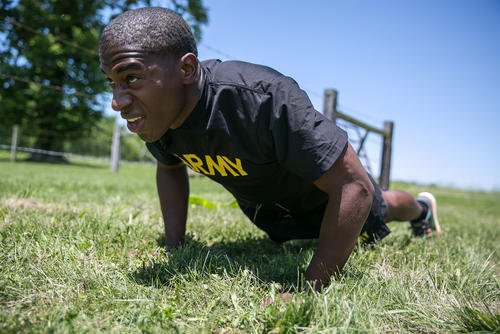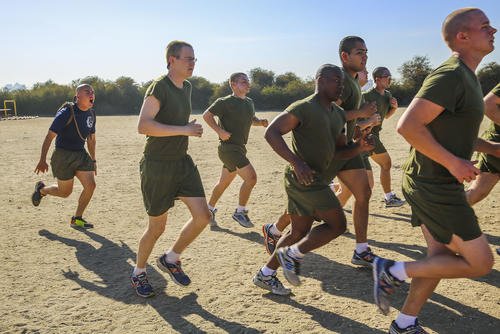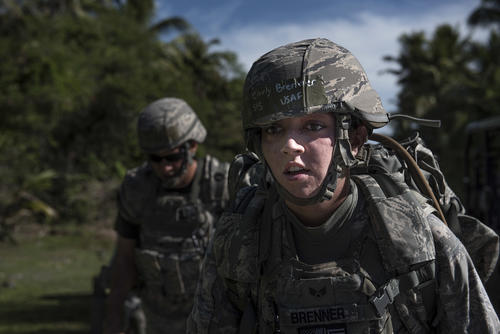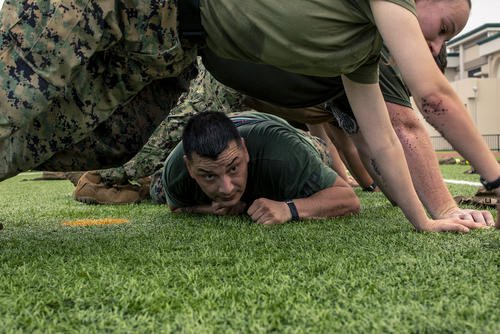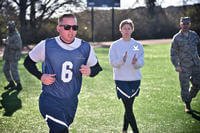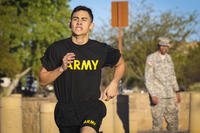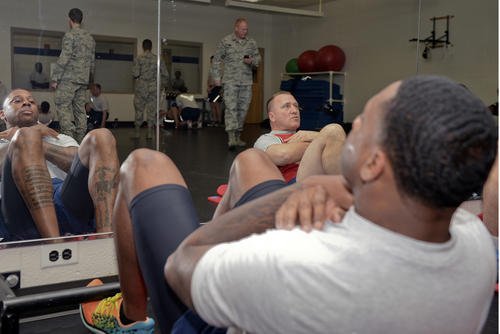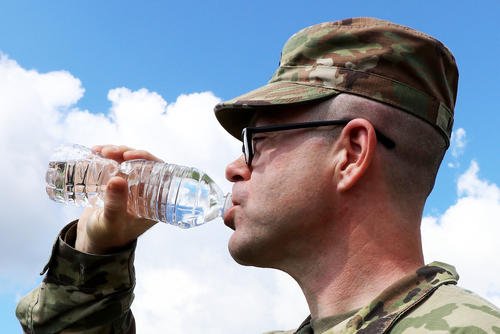By no means do you need to have a background in competitive swimming to become a member of special ops units like SEAL, SWCC, Recon, Pararescue, EOD/Diver and other rescue swimming and diving jobs that require water training. But being a competitive and competent recruit for jobs that require swimming demands a streamlined body position, power and speed.
For land athletes new to the water, passing and exceeding the standards for swimming require a combination of technique, cardio endurance in the pool, and pace.
Five hundred meters or 500 yards are the most common distances in the military swimming distance test. It is essential to learn the proper techniques of the strokes used (freestyle, side stroke, combat swimmer stroke (CSS) or breaststroke, and sidestroke with fins). Watch videos or take lessons from a swimming instructor to help you with this first big hurdle.
Once the technique is mastered, it is time to get into swimming shape. It is different from running or other cardio activities. Many sub-5-minute milers and collegiate-level athletes such as rowers and bikers have difficulty swimming a lap in the pool initially, especially if their technique is not up to par.
Here is a structured approach to doing swim workouts:
Warm up with five minutes of treading and 5 minutes of swimming. Try to do both non-stop. You may have to rest at first to catch your breath and stretch. But eventually, you will want to be able to do this warmup without stopping to rest.
Practice a mix of freestyle along with the stroke in which you will be tested. Many military swim tests require an underwater recovery stroke like breaststroke, elementary sidestroke or the CSS.
Swimming Work Sets
Option 1: 50-50 Swim Workout
Repeat as many times as you can. Do 50-meter freestyle hard and 50-meter CSS or breaststroke each. Rest 10 to 15 seconds. Build up to 10 to 15 sets as you progress. This requires both freestyle and the testing stroke you will use. In this video, it is the CSS, but you could use sidestroke or breaststroke if you prefer.
Option 2: Goal Pace/Speed Intervals
Repeat 5 to 10 times: Swim 50 meters (any stroke) at your goal pace. For instance, if you want a swim time of 9 minutes on the 500-meter swim, you need to shoot for 54-second laps. Rest 10-15 seconds at first. Eventually, you will want to improve your conditioning so you do not need rest and can take one deep breath on the wall and do the next set.
Option 3: Extended Swim
As you progress with your conditioning, you will be able to swim more than one lap without getting winded. Start doing bigger sets of 250 meters to 300 meters for two to three sets as your workout.
Option 4: Pyramid Set
How high can you go up the pyramid of laps? Swim one lap, rest. Two laps, rest. Three laps, rest. Four laps rest. Five laps, rest. Continue up the pyramid until you can no longer do laps without resting. Then, repeat in reverse order. Also, work to maintain pace for as long as you can.
Cooldown
Cool down with 100 to 200 meters and 5-minute tread or pool skills (drownproofing). Finish your workout with a cooldown to help you recover. Swim at a relaxed pace, emphasizing your breathing and overall relaxation. For recovery, select any stroke that feels comfortable, swimming at an easy pace to help your body transition out of the workout.
Remember to Add Treading
Many people think treading is easy until they do it with no hands and hold a weight in their hands. Treading must be part of every swim workout. It is recommended that you practice a pool skill like treading in a 5- to 10-minute warmup or cooldown before or after every swim workout.
Want to Learn More About Military Life?
Whether you're thinking of joining the military, looking for fitness and basic training tips, or keeping up with military life and benefits, Military.com has you covered. Subscribe to Military.com to have military news, updates and resources delivered directly to your inbox.







